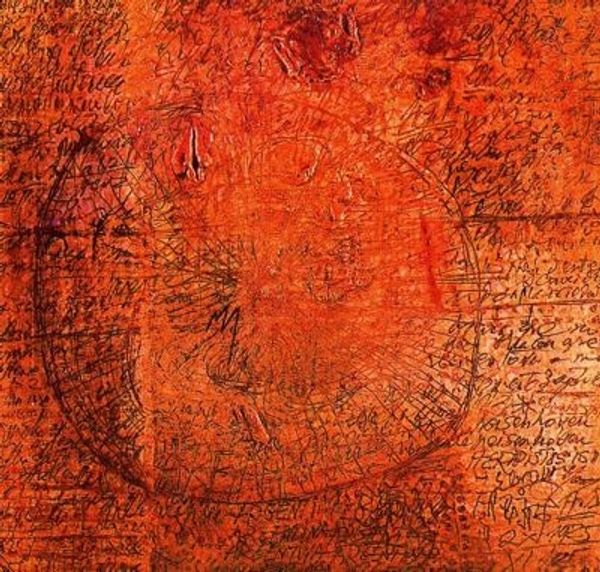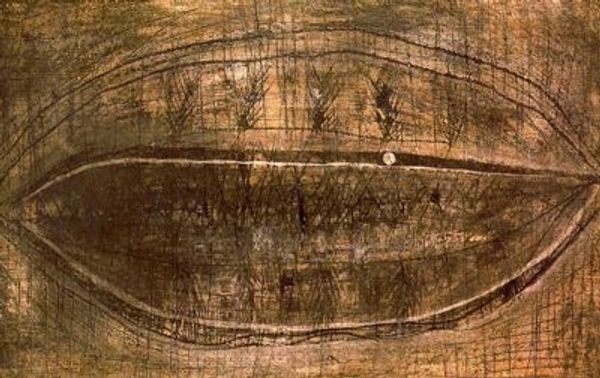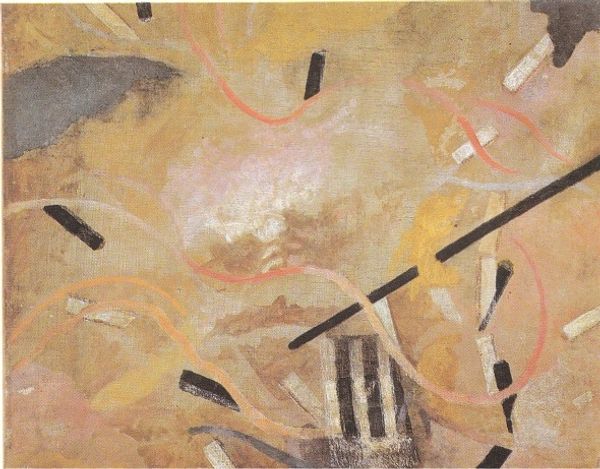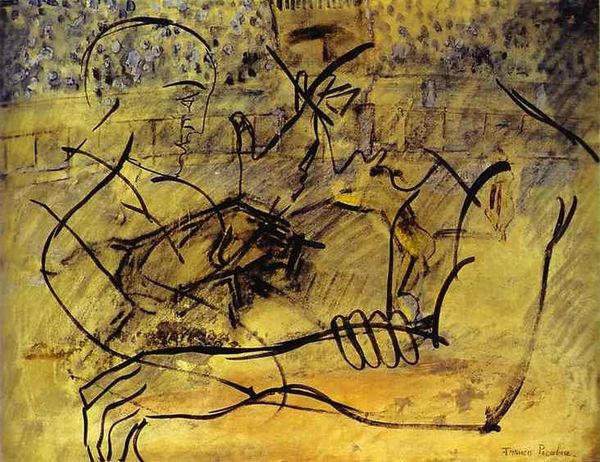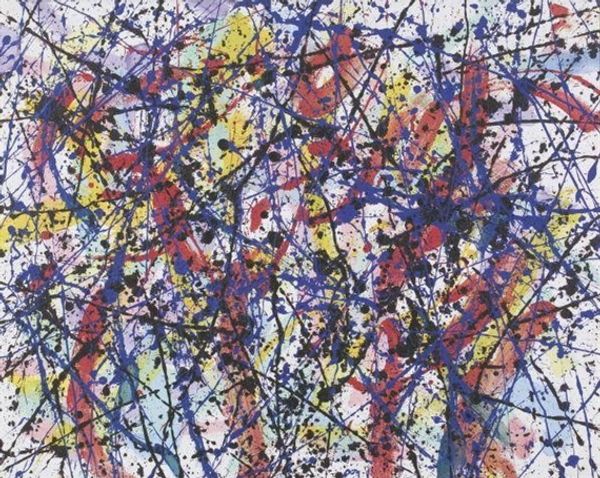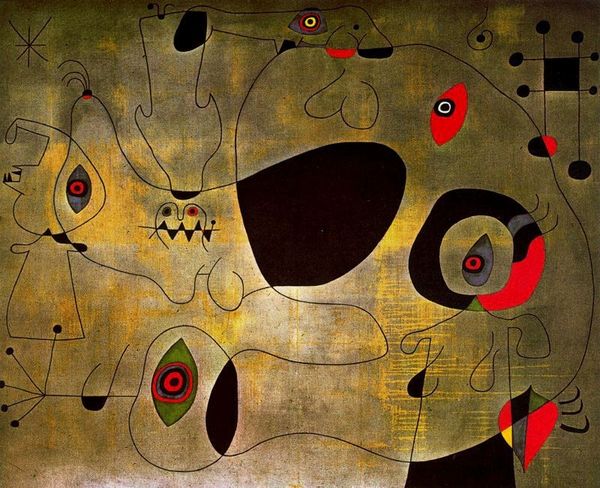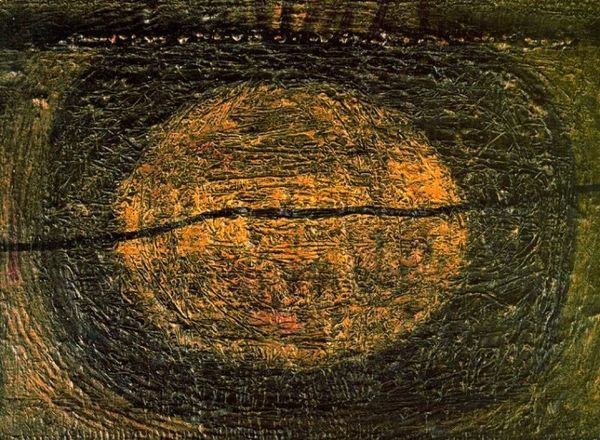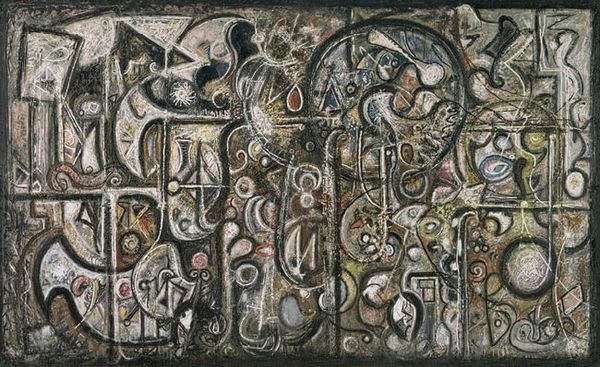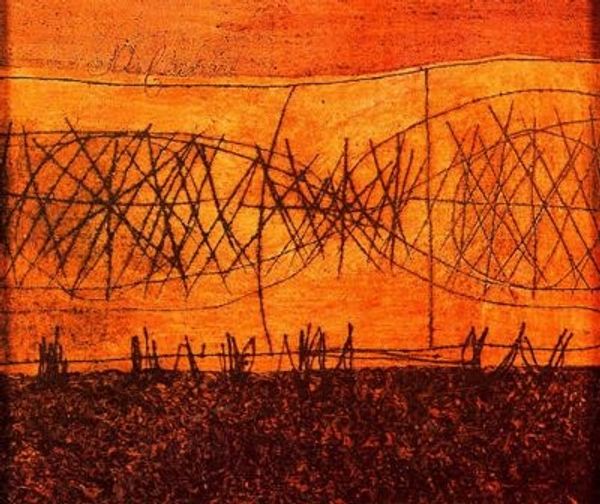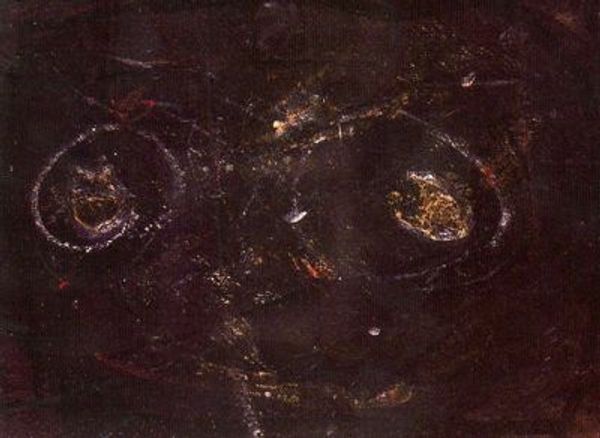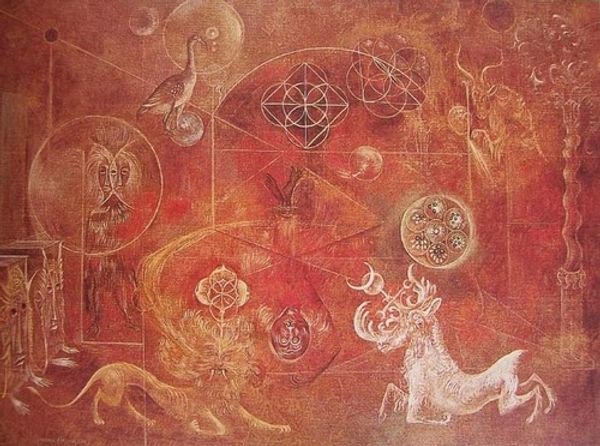
mixed-media
#
abstract-expressionism
#
abstract expressionism
#
mixed-media
#
abstract painting
#
form
#
abstract-art
#
line
#
abstract art
Copyright: Modest Cuixart,Fair Use
Curator: This is "Linneus escriba" created in 1948 by Modest Cuixart, a piece rendered in mixed media that epitomizes his exploration of abstract art. Editor: It's immediately striking— a complex web of lines overlaid on a background of muted yellows and browns. There's a certain anxiety in its abstraction. It feels almost frantic. Curator: The late 1940s were a pivotal moment. Spain was still reeling from the Civil War and its aftermath. Artists like Cuixart were grappling with how to express a world fundamentally fractured, how could one create after what was, was no longer, you see? Editor: Indeed. And from a formal perspective, look at how those sharp lines cut across the warmer tones beneath. It disrupts any sense of tranquility the colors might offer. There is that element of "angst." Curator: Cuixart's embrace of abstract expressionism allowed him to engage with universal feelings of distress and hope during the Franco regime. It's a way to sidestep censorship by not depicting easily defined iconography. This artwork speaks more of the atmosphere felt at the time. Editor: Note, too, how some of those lines appear to almost scrape at the surface of the canvas, enhancing a raw texture. Curator: Yes, the materiality is key here. The way the paint is applied, almost violently at certain places, it heightens the sense of a world under tension. Cuixart went on, with others, to create the Dau al Set group and in a time where "official" art was celebrated for its conservative realism, Cuixart was committed to push boundaries through non-figurative art. Editor: I appreciate your insights; the sociopolitical climate gives the formal decisions a different weight. Now, I'm struck anew by the interplay between order and chaos inherent in this piece, especially with the composition; the eye doesn't know where to focus. Curator: Right, in this sense Cuixart has presented us not just a picture, but with a perspective: a period where clarity, focus, or direction was not afforded to everyone. Editor: Seeing the piece through this new lens changes how I think about its emotive power, beyond just aesthetic pleasure. Curator: Art like this invites us to ask difficult questions about the artist, his context and our present experience of it all. Editor: Well said. It shows, even through abstraction, that artworks like "Linneus escriba" give shape to human experiences.
Comments
No comments
Be the first to comment and join the conversation on the ultimate creative platform.
